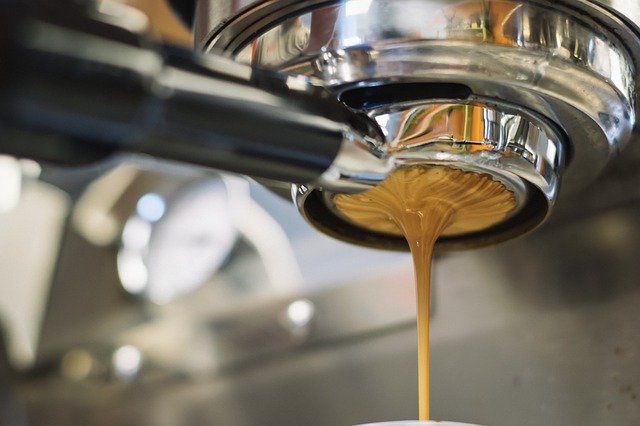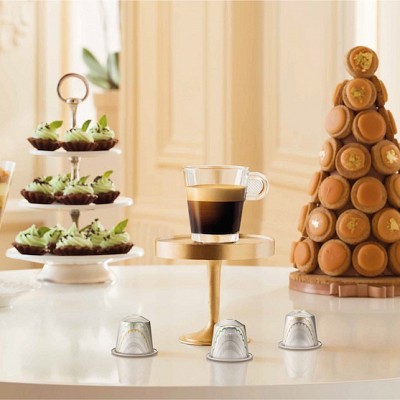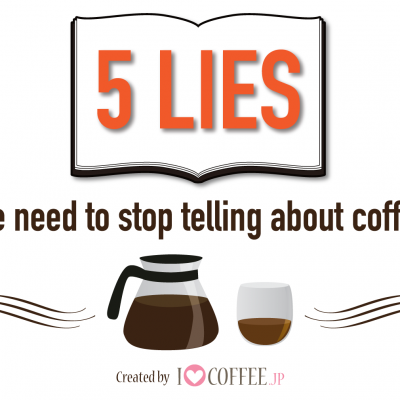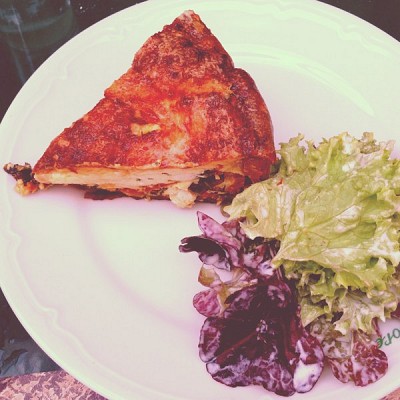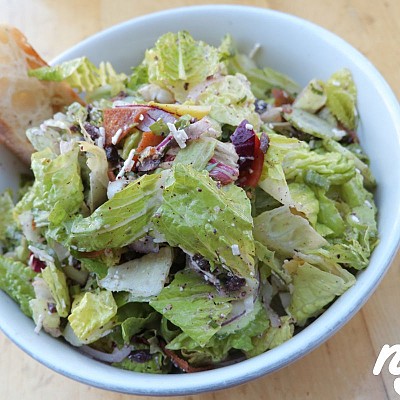Let me start off by saying that you most absolutely need a coffee maker. Starting your day with a bad-tasting cup of coffee is much worse than not drinking your morning coffee! So knowing what to buy and how is the first step to preparing a steaming cup at home.
It doesn’t matter how you drink your coffee every morning or for the rest of the day. I have found the right tricks and ropes to get you started on any budget. From basic coffee makers to complex caffeine brewing machines, with this guide, you will know what exactly to choose and why. Buying a good coffee maker proves that you appreciate good coffee and are willing to invest in features that don’t get in the way.
But wait. Here’s what you’re probably thinking, “Why go through all this trouble when I can hop into a coffee shop and drink a delicious cup in under 10 minutes?” Owning a coffee maker is surprisingly cost-effective. But that’s just one of its many benefits.
Buying a coffee maker can have some mind-blowing advantages that you probably never thought of.
-
Save you lots of money, in the long run. Based on a report, you consume $2 to $3 on a cup of coffee. Even more if you wish to add flavors. So owning a coffee maker is more cost-efficient than buying a single cup of coffee every day from a coffee shop. (1)
-
Making your own coffee allows you to experiment with different flavors. You can make any type of coffee that is iced or hot and with milk or without milk. For example, a report showed that millennials prefer drinking espresso drinks than brewed coffee. How amazing would it be to make your choice of an espresso drink without paying extra for it? (2)
-
Among many other benefits, the one that stands out the most is the intense coffee smell that takes over your home every morning. It is proven that coffee beans’ aroma can make you feel more active and reduce stress. (3)
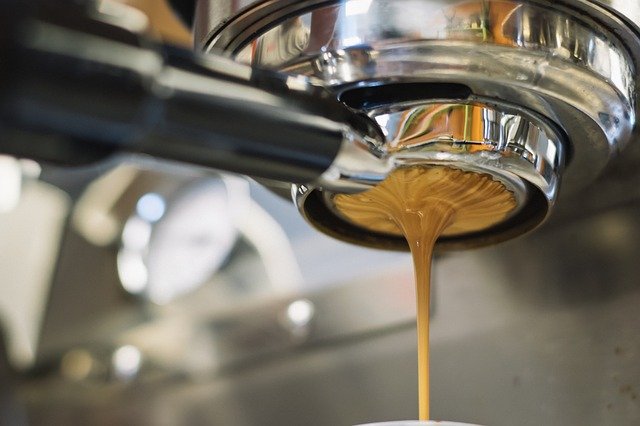
If you’re reading this, it means you’re convinced! It takes a while to prepare coffee exactly how it’s supposed to. So if you want homemade coffee to bring the same warmth and aroma as a barista, here’s what you need to know.
1. Type Of Coffee Makers
There are many different types of coffee makers, even some that you might have never heard of! So let’s look at the most popular types and their features.
Drip coffee maker: A drip coffee maker is the most common type of coffee maker. It’s also the simplest one to use. It comes with a simple coffee filter basket and a water chamber.
To make an automatic drip coffee maker work you need to add coffee grounds into the basket, add water to the chamber, and let the water get heated for it to go through the coffee basket and into the carafe. This process usually takes about 5-10 minutes depending on the water capacity.
Main features: An average drip coffee maker boasts of basic features such as water temperature settings, coffee grinder, automatic power shut-off, filter changes, and pre-programmed settings. These features get you the perfect cup of coffee every morning without much effort.
Ideal for: People who like their coffee quick and bold. It’s also perfect for those who need more than a single cup to start their day.
Single-serve coffee maker: As the name suggests, it is specifically designed for serving a single cup of coffee at a time. It is one of the most versatile ways to make coffee. It comes with a “pod” that works as a teabag filled with loose coffee grounds. A single-serve coffee maker allows you to combine different coffee flavors and ingredients.
Main features: An average single-serve coffee maker boasts of features such as coffee strength settings, a wide range of coffee pods, better storage, and brewing size.
Ideal for: People who like to experiment with different flavors and varieties. It’s also ideal for people who do not like to clean up after brewing morning coffee.
French press coffee maker: A French press coffee maker is yet another easy to use machine. All you have to do is put the coffee grounds, add hot water, and shut the lid tight. It uses the method of an espresso machine to immerse the coffee grounds in the boiling water. And after the plunger (built-in) extracts the rich coffee from the coarsely ground coffee beans.
Using a French press coffee maker is more affordable than a drip or a single-serve coffee maker. Most French press coffee makers do not require electricity to brew coffee.
Main features: A French press boasts of features including a built-in plunger, lightweight, and glass construction.
Ideal for: People living in compact homes. It’s also perfect for people want their coffee maker wherever they go, for traveling, office use, stay-overs, etc.
Espresso coffee maker: An espresso coffee maker is what you usually see in a coffee shop or a barista. It is the most expensive and heavy-duty coffee maker on the list. They offer stronger and more aromatic cups of coffee. Plus, you can make different variations of coffee such as lattes, mochas, and macchiatos with an espresso machine.
Main features: An average espresso machine boasts of features such as a pressure pump, coffee pod compatibility, a portafilter, automatic settings, and a water boiler.
Ideal for: Serious coffee aficionados who love drinking more than one serving of strong coffee.
Other types: Other less common types of coffee makers include percolators and specialty coffee machines.
With so many coffee makers at your disposal, choosing the right one isn’t easy. Most people prefer buying based on price and convenience. So keep in mind you’re aiming for the right type before negotiating on price and size.
2. Considering The Right Quantity
Some people worry about how much coffee they need to put in a coffee maker for the perfect cup. Most times, brands disclose the ideal quantity or industry standard as a good starting point for beginners. So if you’re using ground coffee for either drip or auto-drip coffee makers, knowing how much coffee to put in is essential.
Having said that, you can brew a steaming cup of coffee using a standard brewing chart right here. But if you’re more concerned about using an automatic drip coffee maker, at home and for the first time, this might help you.
Moving forward, there’s another quantity factor you must consider when choosing a coffee maker. It’s the number of people that will be using the coffee maker. And how much will a person drink at one time?
If your home consists of 4-6 members who drink a single cup of coffee every morning buying a single-serve is not applicable. Because then you’d have to spend more time and effort in making a single cup 5 times for each of your home members before leaving for work. And that defeats the point of buying a coffee maker, don’t you think?
The most convenient thing to do is consider a multi-person coffee maker. A multi-person coffee maker produces 4-10 cups of coffee in a single serve. Other alternatives can be buying a French press coffee maker. You can buy 3-cup, 4-cup or 8-cup French press machines easily. Plus, they’re easier to maintain with minimal cleanup.
To decide which coffee maker suits you and your family the best, considering quantity is very important. Some coffee machines come with accessories, such as K-pods, that are expensive to buy. If you’re a heavy coffee drinker, taking this factor into consideration can save you both time and money.
3. Determining Your Budget
There are plenty of coffee makers to choose from. However, you might limit your options based on the cost you’re expected to pay for a coffee maker. Whether you’re a new to owning one or your existing coffee maker needs replacing, it’s time to upgrade to something that’s valuable and efficient.
That said, let’s look at some of the best price ranges of coffee makers that might influence your purchasing decision. (4,5)
Below $100: Coffee makers such as espresso machines, single-serve machines, and French press machines often fall into this range. Espresso machines are available in different sizes with basic espresso features, so buying them at a low cost is possible.
Affordable coffee makers boast of a simple “click and serve” service. They lack complex programmability and features. And they’re fairly durable and energy-efficient to use for a long time.
Other coffee makers using pod capsules or coffee filter baskets cost less than expected. Some may allow reusable coffee filters. These types of coffee machines offer both coffee and flavored coffee. Plus, they come with built-in brewing and temperature settings to suit your specific needs.
Above $150: The cost of high-grade espresso machines and bean-to-cup machines occupy more expensive grounds on the market. They’re generally high-end, which means better programmability, temperature control settings, and built-in grinder features.
Most expensive coffee makers offer extra features such as self-cleaning, water filtration, etc. You can opt to buy entry-level versions of such machines to reduce buying cost and accessories cost.
4. Does It Have Brew-Strength Control Features?
There are many ways to brew coffee with a coffee maker. And based on what you buy can you opt for something more or less complex in terms of preference. If you think about how you like your coffee and how you want it to brew, you will understand your coffee drinking habits.
Some people drink over 2-3 cups of coffee every day. But you already know that anything in excess is never good. So taking control over your caffeine intake with a standard brew-strength feature is necessary. (6,7)
Modern coffee maker versions come with such multi-function settings to create either a stronger or subtler coffee taste. So knowing which coffee maker does this the best can help you choose the right machine at the best price.
Drip coffee maker: These machines offer standard brew-strength control settings. You can choose from light, medium, to strong coffee flavor selections. This helps when you’re making different variations of coffee such as cappuccinos, mochas, and macchiatos.
Single-serve coffee maker: A single-serve coffee maker produces coffee by either a drip or espresso method. So you can choose your brewing strength based on how much coffee you put in.
Single-serve coffee makers are more advanced in terms of brewing than drip coffee makers. So they adjust the water’s temperature and to take a longer time to saturate the coarsely ground coffee beans. This means better tasting coffee with a strong flavor.
Espresso machine: An espresso machine offers multiple brewing models such as automatic, super-automatic, steam, and manual. Drinking espresso without adding milk, cream, or other ingredients means you want something strong and flavorful.
There are many ways to drink an espresso, that is in mochas, cappuccinos, and macchiatos. But determining the right brewing strength for an espresso machine is extremely important. It enhances the coffee flavor and serves you the original coffee taste. (8)
With an automatic espresso machine, the machine controls the brewing capacity and the temperature of each espresso shot. Giving you the best tasting coffee you’ve always wanted. In manual or level-controlled espresso machines, you can decide how long you want the coffee grounds to brew and how much.
5. Do You Need Automatic Shut-Off?
Buying an auto shutoff coffee maker isn’t as difficult as you thought. Most modern coffee maker versions come with auto shutoff features. This reduces energy cost of your home and increases the durability factor of the coffee machine.
If you have ever used a coffee maker at home, you must have, at least once in your life, forgotten to shut off the coffee maker before leaving for work. But with an auto shutoff feature, you don’t have to worry about your coffee maker running all day long.
An automatic shut-off feature isn’t just about energy efficiency. It’s about convenience too. As soon as you wake up in the morning, you can have a freshly prepared cup of joe without pressing a single button. Seems magical, right?
Certain coffee maker brands come with features that automatically turn the machine on, heat the water, and brew the coffee. The only drawback or “inconvenience” to such technology is the added cost. Such machines don’t come cheap as compared to manual scheduled coffee makers. (9)
On the other hand, buying a coffee maker with auto shutoff features is the most environmental-friendly thing to do. Some machines shut off after 5 minutes of remaining idle. This helps improve energy consumption levels which saves a huge sum of money by the end of the year. (10)
6. Opting For A Coffee Grinder
Most coffee aficionados know that grinding coffee beans before the brewing process makes the coffee taste better. If you have limited counter space, buying a coffee maker with a built-in coffee grinder. Otherwise, buying a separate coffee grinder for whole beans is a good way to go.
Want to know how you can properly clean and maintain your coffee grinder for future use? This will help.
To know what’s out there, let’s look at the two different types of coffee grinders.
Blade grinder: A blade grinder is an entry-level grinder. You can control the ground consistency of the beans by the amount of time. So the longer you use the blade grinder, the better the coarseness of the coffee beans.
The downside to using a blade grinder as opposed to a built-in grinder is inconsistent results. Generally, these are very affordable and basic to use, but they’re not as precise as a burr grinder or a coffee maker.
Burr grinder: A burr grinder makes use of cones and discs to break coffee beans down into consistent particle sizes. They’re extremely precise and efficient to use, definitely an upgrade from blade grinders.
Most burr grinders come with grinding settings to maintain a uniform coffee bean size for brewing.
There are other ways to grind coffee beans without using a coffee grinder. That is with a food processor, immersion blender, or using a pestle or mortar. This process is more drawn-out than using a grinder, but it’s equally effectively. (11)
Buying whole beans or ground coffee has been a matter of question for years. That’s because ground coffee is more accessible than whole beans. Also, ground coffee is much simpler and faster to brew than whole beans. But that doesn’t mean you sidestep whole beans altogether.
Whole beans coffee offers the kind of flavor and freshness that pre-ground coffee lacks. You can grind your own coffee based on your coffee drinking habits. Plus, every coffee drip boasts of a strong, yet flavorful coffee taste.
Here’s why buying a coffee maker with a built-in grinder would do you good:
-
It gives you the complete coffee experience.
-
You can grind beans based on your brewing method such as French press, espresso, or drip method.
-
The coffee doesn’t go stale, like some pre-ground coffee packets. (12)
7. Understanding Thermal Carafes
Buying an intuitive coffee maker means buying one with a thermal carafe. Of course, this only qualifies to coffee makers that serve more than 2-3 cups of coffee on a single serving.
What is a thermal carafe?
It is a temperature-controlled coffee pot that keeps your drink hot long after brewing. Coffee makers that come in thermal carafes are usually made up of stainless steel. This keeps the coffee hot for longer as it restricts the liquid from evaporating. So all the heat is sealed inside the pot.
An alternative to buying stainless steel carafes is glass carafes. There are various factors to consider when looking for carafes in coffee makers. Even though thermal or stainless steel carafes have a longer holding time than glass, glass carafes offer better visibility and are dishwasher safe.
Stainless steel carafes: Thermal carafes made of stainless steel are also well-vacuumed and insulated for heat accumulation. An average stainless steel carafe has a 60-minute holding time. For optimal heating, you need to pre-heat the thermal carafe before the brewing process ends. This keeps the carafe from losing the ideal temperature required for keep the drink hot.
On the other hand, cleaning a stainless steel carafe requires time and effort as they’re not dishwasher safe. The manual cleaning process of a thermal carafe takes a few minutes out of your daily chores, but the end result is a steaming cup of joe. Since it’s stainless steel, coffee stains are a gradual, but inevitable outcome. So manually removing coffee stains is recommended. (13)
Glass carafes: Glass carafes have a major advantage over stainless steel carafes. The advantage is that they offer visible coffee brewing. So you know how much coffee is left to brew in the pot. This also helps when you have many coffee-drinkers in your home to serve.
A glass carafe has a 20-minute holding time. They’re also easier to clean as they’re dishwasher-friendly and very sturdy. Unlike stainless steel carafes, you are not required to pre-heat a glass carafe before brewing. A glass carafe comes with a warm plate underneath which automatically keeps the coffee steaming and hot when you want it. (14)
8. Does It Offer Water Temperature Settings?
Similar to brew-strength settings, determining the coffee machine’s temperature selections is essential. You will find plenty of coffee makers with adjustable temperature settings. Standard temperature control varies from low to high while more advanced settings feature specific temperatures such as 150 to 210 degrees Fahrenheit.
Based on one report, the ideal coffee brewing temperature is 195 degrees Fahrenheit. (16)
Anything less or more can cause the coffee to under-extract, which isn’t the ideal method of brewing. It leads to loss of flavor and aroma in the final result of coffee. Water temperature has a direct influence on coffee extraction, which most people often forget about.
Some coffee makers allow you to adjust the temperature while brewing so it doesn’t lead to over-extraction. If you’re using a single-serve or espresso coffee maker, setting a slightly lower temperature for brewing a single cup is also recommended.
Coffee makers such as a French press or a percolator lack such expert temperature control settings. But you can manually control the water temperature by making sure it doesn’t over-boil.
Once you boil the water in a pot, allow it to cool down before pouring it over the ground coffee. The same applies to drinking, cool the drink down to 140 degrees Fahrenheit before devouring.
9. What About The Brewing Time?
Next to brewing strength and temperature, brewing time is what makes coffee taste so great. When working with coffee beans, ensuring your coffee maker has the right brewing time settings is important. It maintains the freshness and flavor of the grind for as long as possible.
When using a drip coffee maker, the brewing process normally takes 5-10 minutes. This depends on the number of cups the machine is serving at a time. For a French press coffee maker, the same brewing process takes under 5 minutes for a hot cup of joe. On the other hand, more advanced coffee makers, such as an espresso machine, takes only a couple of seconds (20-30 seconds) for the coffee to brew. (17)
What about cold brewed coffee? Some modern versions allow you make cold brew coffee. But you would be glad to know that most people make cold brewed coffee for a lot less at home than in a coffee shop. Don’t believe me? Learn how to make the perfect glass of cold brewed coffee here.
10. What Comes After The Coffee Grind?
Now that you know the basics, matching the perfect coffee grind to the coffee maker is also a crucial step. Making sure your coffee grinder offers the right grind size can lead to a flavorful and delicious shot of coffee.
French press coffee maker: For a French press coffee maker, a coarse coffee grind setting is essential. That’s because the water is added to the grounds and not the other way around. The coffee grounds stay in contact with water for a several minutes before straining. This makes a coarse grind setting the perfect choice.
Drip coffee maker: For a drip coffee maker, somewhere between a medium to medium-coarse grind is essential. Drip coffee makers use large batches of coffee that passes through a tiny hole into the brewing basket with water. A perfect example of a drip coffee maker is what you would normally buy from a local café.
Espresso machine: For an espresso machine, an extra-fine grind is the perfect choice. That’s because the contact time of coffee-to-water is so quick and fast, that full extraction is only possible when the coffee beans are fine and medium.
Single-serve coffee maker: For a single-serve coffee maker, which is similar to that of a French press, a medium to fine grind is essential. You can control the brewing time to suit finer coffee grinds, to suit your coffee taste. Compared to other coffee makers, single-serve machines are more varied in terms of grind settings. (18)
Do You Need A New Coffee Maker?
Are you replacing your existing coffee maker for a new one? Before you dwell in on the details, you need to look for these signs before replacing your old machine. If your current coffee maker fails to pass this test, then it’s time to buy a brand new coffee maker right away!
-
The machine stops brewing fresh coffee: This is the most common sign of an unrepairable coffee maker. Many factors weigh in when your coffee maker stops brewing coffee. It can be because of a broken pump, leak, or tank damage.You might be able to repair the damage unless it’s not under warranty and it’s cheap. Spending time in diagnosing the repairing the machine is least preferred when you own a coffee maker.
-
The water temperature control is faulty: If the water doesn’t get hot enough while brewing, it can drastically alter the brewing process. This can mean that the coffee maker’s heating plate or heating element is worn out. If left untreated, it can go bad to worse in a matter of weeks. So if you’re coffee is starting to taste sour and stale, it’s time to buy a new coffee maker.
-
Coffee pods are expensive: Some coffee makers are only compatible with specific pods. And most coffee pods are expensive to buy and lack variety. So if you’re having trouble budgeting for new coffee pods, you might want to find a new machine to make you a good cup of joe every morning.
Conclusion
There are many popular brands in the market that offer entry-level to advanced coffee makers. The choice is yours based on your coffee preferences. If you prefer drinking espresso drinks or a single, strong black cup of coffee, there is a coffee maker for every mood.
It's true that even if you invest in a high-end coffee maker, you’re saving tons of money toward the end of the year as opposed to buying from a coffee shop. You can work your way up to experimenting with different ingredients and grinds to make barista-inspired coffee right in your home.
From standard drip coffee makers to percolators, buying a coffee maker is less complicated than it used to be. All you have to do is run through some of its best features and pick the right price. Contrary to popular beliefs, buying a coffee maker online isn’t a bad thing. Most brands disclose even the most miniscule detail about their products from brewing capacity, grind setting, to weight and footprint specifications.
There are plenty of ways to prepare a steaming cup of coffee, and the only way to know each of them is by buying a solid coffee maker right away! If you spend more on a high-end coffee maker now, it’s much better than exhausting small amounts on a daily basis on a cup that isn’t as flavorful and personal as homemade coffee.
So which is it going to be?


















